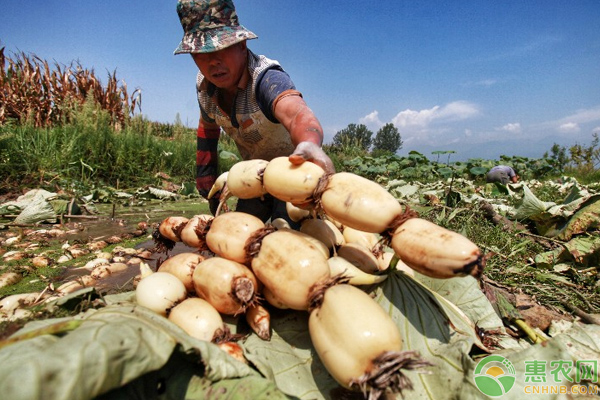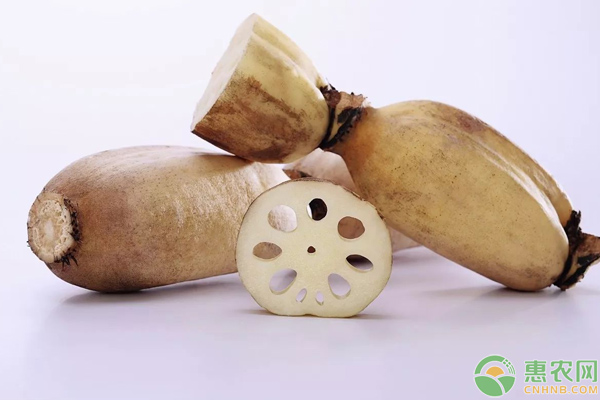Lotus root is a “nourishing Jiazhenâ€, which is rich in nutrients and can be used as a nourishing medicine. Long-term consumption is good for the human body, and can be raw, cold or soup. It can also be processed into tantalum powder. Has a good food value and economic value. The following small series will share with you the cultivation techniques of lotus root protection. Anyone who wants to plant can learn from it.

1. Selection of land plots: Planting lotus roots with protected land should choose fertile soil, flat terrain, sufficient water source, and sheds with light water seepage. A quick-permeable plot can lay 6-8 long plastic film under the soil layer to prevent moisture infiltration.
    2. Variety selection: Suitable varieties for protecting the planting lotus roots include Elian No.1 and Elian No.3, as well as local early maturing varieties, four sections, early morning and five sections.
3, soil preparation: the base fertilizer should be based on decomposed organic fertilizer, the amount per mu should be no less than 3 cubic meters, fertilizer can apply 15-25 kg of diammonium phosphate or 50-70 kg of superphosphate. Nitrogen and potassium fertilizers can only be used for top dressing. In addition, 3.5 kg of zinc fertilizer and 1 kg of boron fertilizer are required per acre. Plowing and leveling the land for good use. This work should be completed before the Spring Festival.
4, built shed: the use of greenhouse cultivation lotus roots listed early but the cost is too high, the general benefits; the use of greenhouse cultivation costs are lower, the greenhouse is north-south direction, the length is 70-80 meters, the width of the shed is larger, the early lotus root The better the birth. For early maturity, the shed should be wide and not narrow, generally 6-8 meters is good, the greenhouse should be built before the end of February, and the shed will be warmed.

5. Sowing: When the soil temperature rises above 8 °C, it can be sown. The amount of seeds per acre is 200-250 kg, and both the female and the medlar can be used for seeding.
6. Water management: watering after sowing, the water depth should be kept at about 15 cm, which can suppress weeds and increase the temperature quickly. The water level can be increased to 20-25 cm after the emergence of the leaves in early April.
7, topdressing: planting lotus roots in the greenhouse to apply ammonium bicarbonate, urea and urea-containing compound fertilizer are easy to cause burning seedlings, nitrogen fertilizer must be applied in the soil, and ventilation 3-4 days day and night. After the lotus leaves appear in the leaves, they begin to take root to absorb the fertilizer, and then enter the vigorous growth stage, while the roots of the lotus roots are very short. Therefore, after the emergence of the leaves in early April, a large amount of quick-acting fertilizer should be applied, and 20 kg of urea and 25 kg of potassium sulfate per acre can be applied. Urea should be applied, buried, and sprayed with potassium sulfate, and pay attention to ventilation. In order to prevent burning of the seedlings, it is possible to replace the urea with a fully decomposed cake fertilizer, chicken manure or a fertilizer liquid diluted from the pile of manure piles, and the effect is also good.

8. Harvesting: The small bow shed in the greenhouse can be harvested at the end of May. The cultivation in a single greenhouse can be harvested in mid-June. Before harvesting, you can explore the field with your hands and feet to check if it meets the listing requirements. It is possible to replant other vegetables after one-time harvesting , or to use only large alfalfa to destroy the stems and leaves, let them continue to grow and apply nitrogen fertilizer once, and harvest the second crop from August to September.
    9. Water and drought rotation: After harvesting in the middle of June, the shed will be planted with sunshade nets and planted with celery, harvested from late August to early October; picking up garlic seedlings, shed the shed in late October, harvesting before and after New Year's Day, will Multiply the economic benefits and improve the micro-ecological environment of the soil to achieve sustainable use of the fields.
    The above is about the cultivation technology of lotus roots. You can learn from it. In Xiaobian's view, lotus root has a good market value, and it is worthy of everyone who wants to develop planting industry. Everyone can think about it.
Wound Care Dressing Pad,Pu Wound Dressing,Wound Dressing Sticker ,Care Dressing Sticker
Wenzhou Celecare Medical Instruments Co.,Ltd , https://www.celecaremed.com